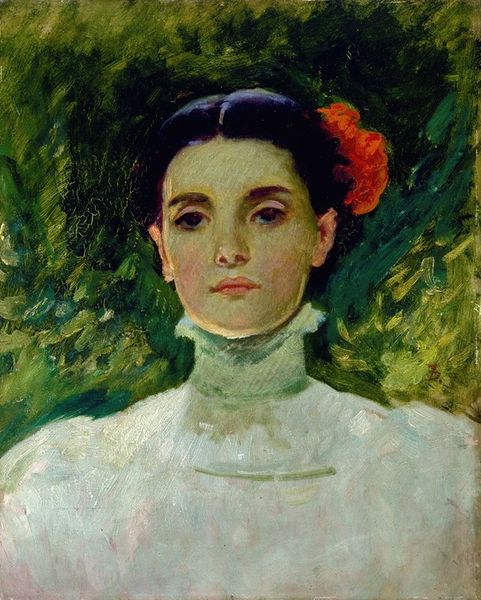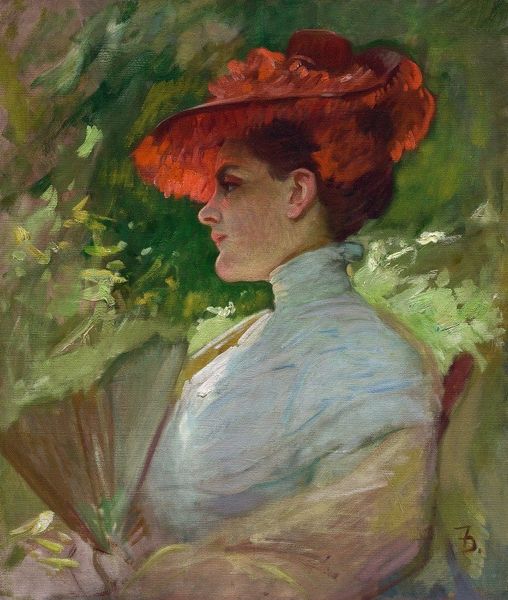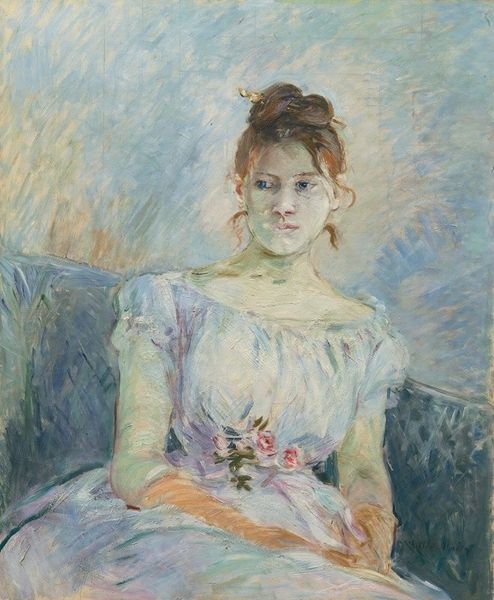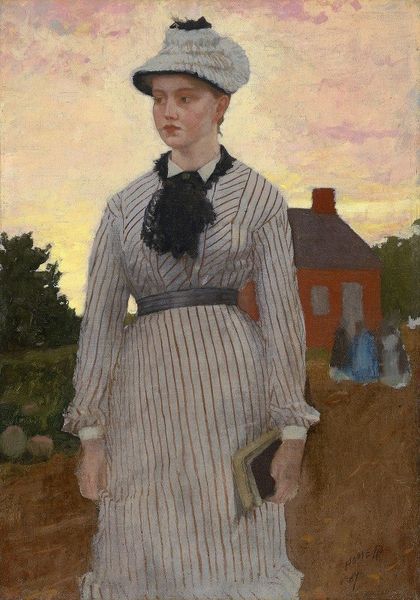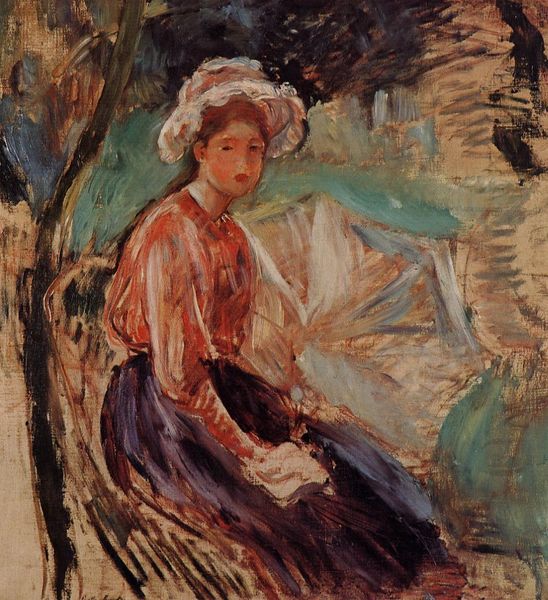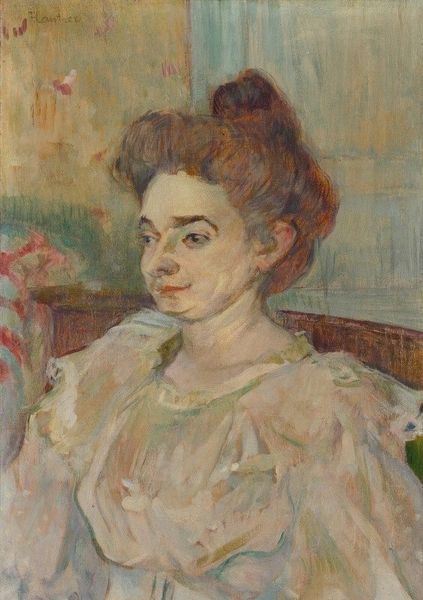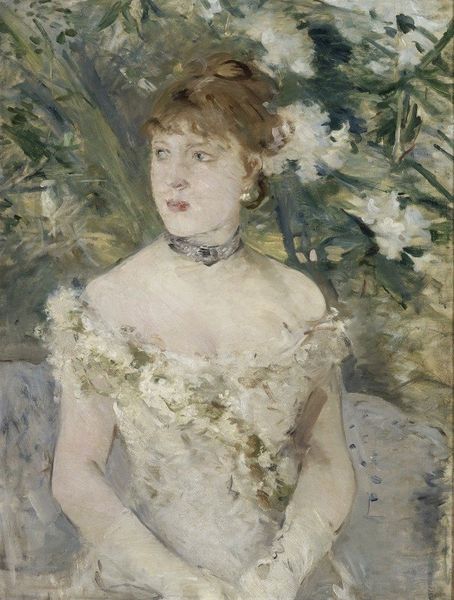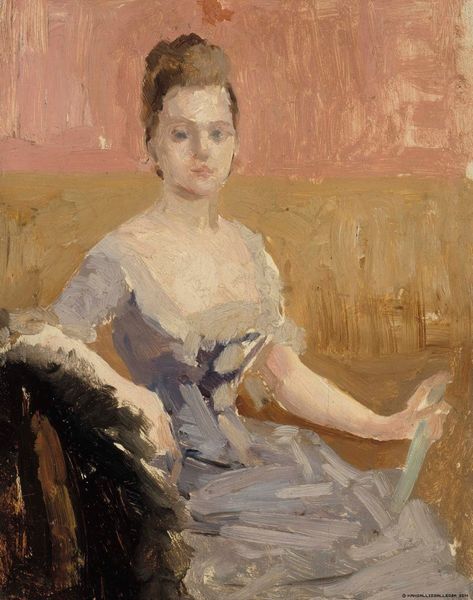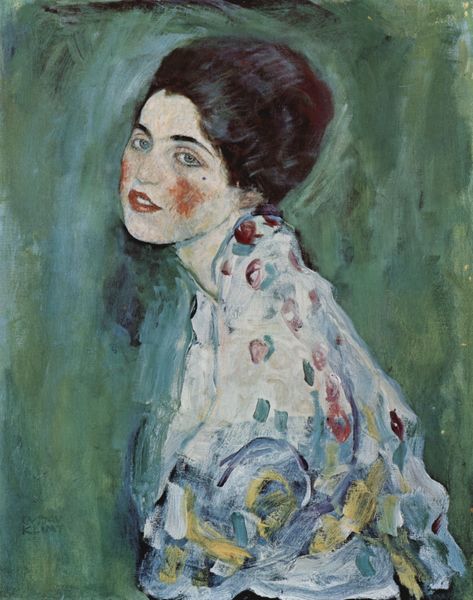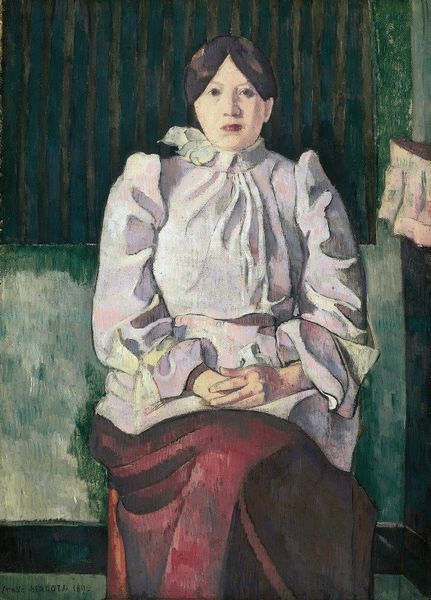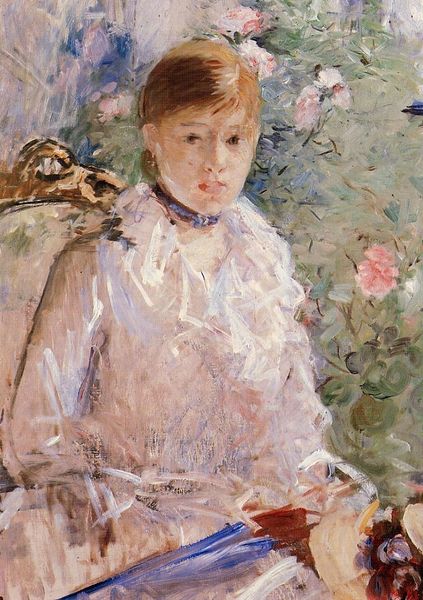
Copyright: Public Domain: Artvee
Curator: What we’re looking at here is Jacek Malczewski's "Portrait of a Young Lady" from 1906. It's an oil painting. Editor: The portrait gives off a dreamy sort of vibe. I’m particularly drawn to the textures created by the oil paint. What do you see in this work? Curator: Well, let's consider the materiality first. Notice the visible brushstrokes and the layering of paint. What does that tell us about the artist’s process? The fact that the paint seems almost carelessly thrown onto the canvas is very interesting, right? Editor: It's like he's less interested in perfect representation and more in the sheer act of painting, the texture and the substance of the oil itself. How did plein-air affect painting in this period? Curator: Exactly! The “en plein air” technique was meant to move artists outdoors, making landscape painting a more important subject. The use of oil allowed the artist to render these works very quickly and capture nature in its truthfulness. So, think about how that affects the commercial art market at the time. Does the production change how we assign monetary value to paintings like this? What is luxury now? Editor: That’s fascinating! I see how it links artistic practice to broader economic systems. And by thinking about value, and artistic skill as labour, we consider art production in society more critically. Curator: Absolutely. Editor: I hadn't thought about it that way before. I will look at artworks with an awareness of art production henceforth! Curator: Exactly. Keep thinking about material concerns; how the artwork itself is brought into being will reveal more about the message it sends.
Comments
No comments
Be the first to comment and join the conversation on the ultimate creative platform.
